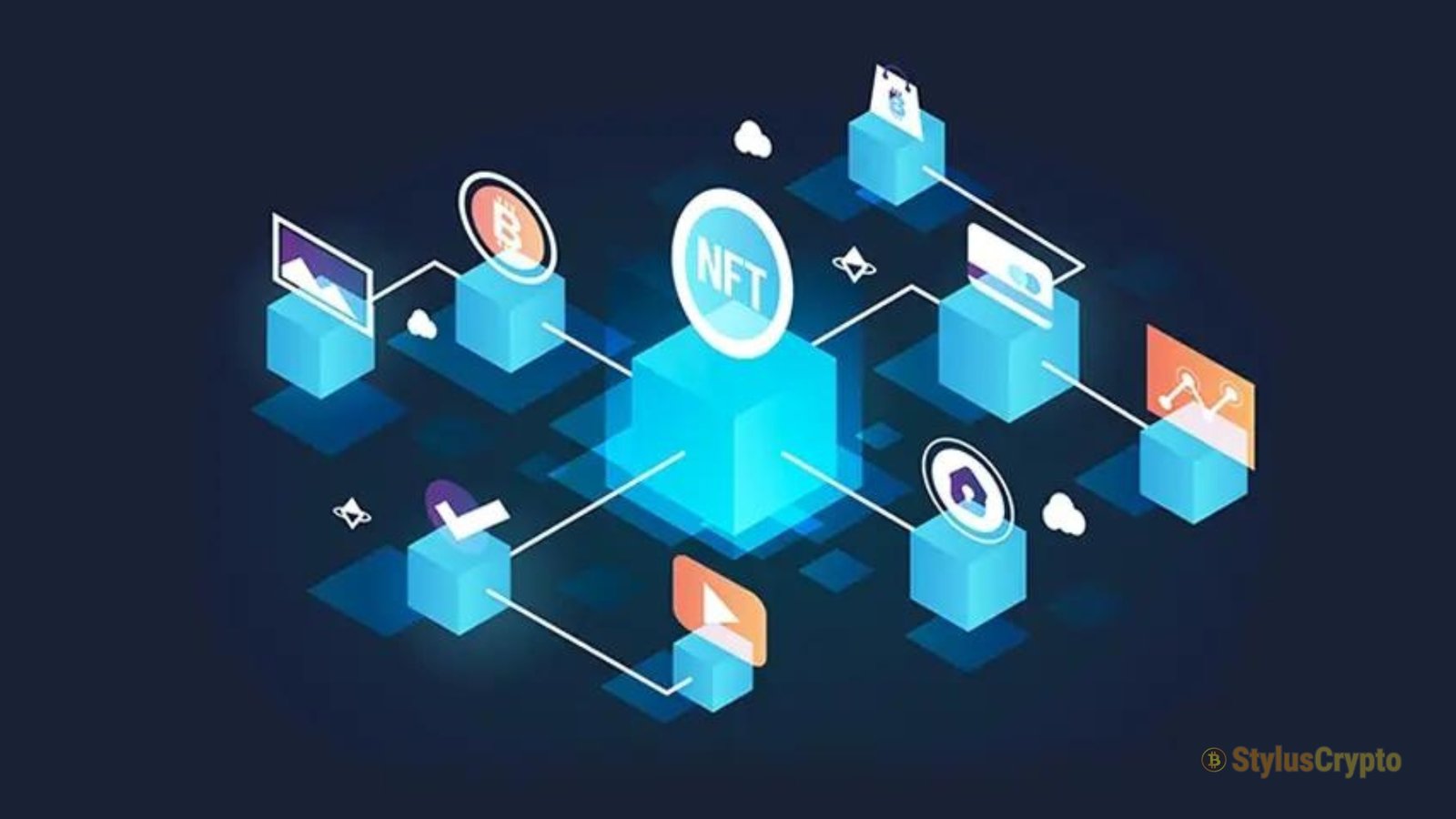Characteristics of Blockchain Technology: Blockchain technology has garnered significant attention over the past decade, transforming from a niche concept primarily with cryptocurrencies into a mainstream technological framework with broad applications. At its core, blockchain is a decentralized ledger that records transactions across multiple computers to ensure the data’s security, transparency, and immutability. This article explores blockchain technology’s key characteristics, making it a revolutionary tool across various sectors.
Decentralization
One of the most fundamental characteristics of blockchain technology is decentralization. Unlike traditional centralized systems, where a single entity (like a bank or a government) controls the database, blockchain operates on a peer-to-peer network. Each participant (or node) has a copy of the entire blockchain in this network.
This decentralized nature eliminates the need for intermediaries, reducing the risk of centralized failures and manipulation. For instance, a central bank manages all transactions in a traditional financial system, making it a single point of failure. In contrast, a blockchain system distributes control across all participants, enhancing the system’s resilience and reducing the likelihood of fraud or corruption.
Transparency
Blockchain technology offers a level of transparency unparalleled in traditional systems. Every transaction on a blockchain is recorded in a public ledger visible to all network participants. This transparency builds trust among users because anyone can verify the transactions independently.
For example, in supply chain management, blockchain can track a product’s journey from its origin to its final destination. Each journey stage is recorded on the blockchain, allowing all parties, including consumers, to verify the product’s authenticity and the processes it has undergone.
Immutability
Immutability is another critical feature of blockchain technology. Once a transaction is recorded on a blockchain, it cannot be altered or deleted. This is achieved through cryptographic hashing, where each block in the blockchain contains a unique hash of the previous block. Any attempt to modify the data in a block would change its hash, which would not match the subsequent block, thus alerting the network to the tampering.
This immutability ensures the integrity of the data, making blockchain particularly useful in scenarios where data accuracy and trust are paramount, such as in financial records, legal contracts, and voting systems.
Security
Blockchain technology is inherently secure due to its decentralized and cryptographic nature. Each transaction on the blockchain is encrypted and linked to the previous transaction, forming a chain of blocks. This cryptographic link, combined with the blockchain’s decentralized nature, makes it extremely difficult for unauthorized users to alter the data.
Moreover, blockchain networks often employ consensus mechanisms, such as Proof of Work (PoW) or Proof of Stake (PoS), to validate transactions. These mechanisms require participants to perform specific actions (like solving complex mathematical puzzles in PoW) to add new transactions to the blockchain, further enhancing security. As a result, blockchain is highly resistant to attacks like hacking and fraud.
Consensus Mechanisms
A consensus mechanism is a crucial element of blockchain technology. It ensures that all network participants agree on the validity of transactions. There are several consensus mechanisms, each with a unique method of achieving agreement among network participants.
- Proof of Work (PoW): This is the original consensus mechanism used by Bitcoin. It requires network participants (miners) to solve complex mathematical puzzles to validate transactions and create new blocks. While highly secure, PoW is also energy-intensive and has been criticized for its environmental impact.
- Proof of Stake (PoS): PoS is a more energy-efficient alternative to PoW. Instead of solving puzzles, participants (validators) are chosen to validate transactions and create new blocks based on the number of coins they hold and are willing to “stake” as collateral. PoS is considered more environmentally friendly and scalable than PoW.
- Delegated Proof of Stake (DPoS): Participants vote for a few validators to secure the network and create new blocks in DPoS. This approach is faster and more efficient than PoW and PoS but centralizes authority among a few validators.
- Practical Byzantine Fault Tolerance (PBFT): PBFT is designed for systems where several nodes can fail or act maliciously without compromising the system’s overall functionality. It is beneficial in private or permissioned blockchains, where the number of participants is limited.
Smart Contracts
Smart contracts are self-executing agreements with the terms of the agreement directly written into code. They automatically execute and enforce the terms of the agreement when predefined conditions are met. Smart contracts eliminate the need for intermediaries, reducing costs and increasing efficiency.
For example, in real estate transactions, a smart contract could be programmed to transfer property ownership to the buyer automatically once payment is received. This process is faster, more secure, and less prone to errors than traditional methods.
Tokenization
Tokenization is the process of converting rights to an asset into a digital token on a blockchain. These tokens can represent a wide range of assets, including physical assets (like real estate or art), digital assets (like software licenses), or even utility tokens that grant access to specific services within a blockchain network.
Tokenization offers several benefits, including increased liquidity, fractional ownership, and greater accessibility to previously complex assets to trade. For example, tokenizing real estate allows investors to buy and sell fractional ownership of properties, democratizing access to real estate investments.
Anonymity and Privacy
Blockchain technology can provide a high degree of privacy and anonymity, depending on how it is implemented. In public blockchains like Bitcoin, transactions are pseudonymous, meaning that while the transaction details are visible to everyone, the participants’ identities are not directly linked to their public keys.
However, complete anonymity is not always guaranteed, and there have been instances where blockchain analysis techniques have been used to trace transactions back to their origin. To address this, privacy-focused blockchains like Monero and Zcash use advanced cryptographic techniques to enhance user privacy.
In permissioned blockchains, privacy can be more tightly controlled, with only authorized participants allowed to view certain transactions. This is particularly useful in industries like healthcare and finance, where sensitive data needs to be protected.
Interoperability
Interoperability refers to the ability of different blockchain systems to communicate and work together. As the number of blockchain networks grows, the need for interoperability becomes increasingly important. Interoperable blockchains can share data and value across different networks, enhancing the overall functionality of the technology.
Several projects are working on creating interoperable blockchain systems. For example, Polkadot and Cosmos are designed to facilitate communication between different blockchains, allowing them to operate together seamlessly. Interoperability could lead to a more connected and efficient blockchain ecosystem where users can access various services across multiple networks.
Scalability
Scalability is one of the most significant challenges facing blockchain technology today. The system can become slow and congested as the number of users and transactions on a blockchain increases. For example, Bitcoin and Ethereum, two of the most popular blockchains, have faced scalability issues, leading to high transaction fees and slow processing times.
Several solutions are being explored to address scalability issues. Layer 2 solutions like the Lightning Network for Bitcoin and Ethereum’s rollups aim to increase transaction throughput by processing transactions off-chain and only settling the final result on the main blockchain. Other approaches, such as sharding, divide the blockchain into smaller, more manageable pieces, allowing for parallel transaction processing.
Conclusion
Blockchain technology is characterized by its decentralization, transparency, security, and programmability, among other features. These characteristics make it a powerful tool for transforming industries and creating new opportunities for innovation and collaboration. Addressing scalability, interoperability, and sustainability challenges as the technology evolves will be crucial for unlocking its full potential. Blockchain’s ability to provide secure, transparent, and efficient solutions positions it as a critical digital economy enabler, driving change across finance, healthcare, supply chain management, and beyond.

